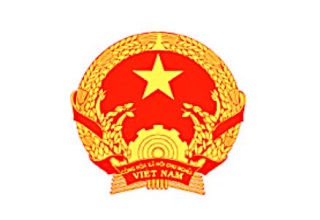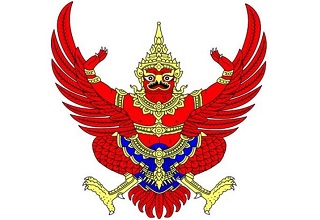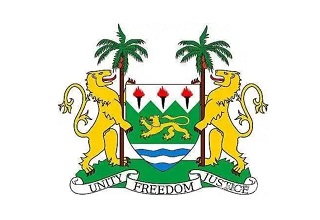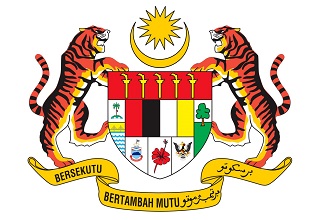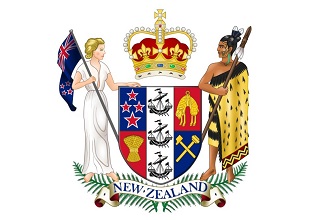Regarding the Inspection and Quarantine Requirements for the fresh apples from Germany
1. Basis for inspection and quarantine
(1) The Biosafety Law of the People's Republic of China;
(2) The Entry-Exit Animal and Plant Quarantine Law of the People's Republic of China and the Regulations for its implementation;
(3) The Food Safety Law of the People's Republic of China and its implementing regulations;
(4) Measures for the Supervision and Administration of Inspection and Quarantine of Imported Fruits;
(5) Working Arrangement between the General Administration of Customs of the People's Republic of China and the Federal Ministry of Food and Agriculture of the Federal Republic of Germany on Plant Quarantine requirements for German Fresh Apples exported to China.
2. Names of goods allowed to enter the country
The fresh Apple (hereinafter referred to as Apple) is Malus domestica, Apple in English.
3. Permissible origin
German apple region.
4. Approved orchards, packaging plants and cold treatment facilities
The orchards, packaging plants and cold treatment facilities of apple exported to China shall be reviewed and filed with the German Plant Protection Organization (hereinafter referred to as Germany) and approved for registration by the General Administration of Customs of the People's Republic of China (hereinafter referred to as China). The registration information includes name, address and registration number, so as to accurately trace the origin of the exported goods when they do not meet the relevant regulations. Before the annual export season, Germany shall provide China with an updated list of registered orchards, packaging plants and cold treatment facilities, which shall be published on the website of the General Administration of Customs after approval by China.
5. List of quarantine pests of concern to China
5.1 Ceratitis capitata
5.2 Cydia pomonella
5.3 Dasineura mali
5.4 Epidiaspis leperii
5.5 Eriosoma lanigerum
5.6 Rhopalosiphum insertum
5.7 Hoplocampa testudinea
5.8 Rhynchites aequatus
5.9 Rhynchites bacchus
5.10 Erwinia amylovora
5.11 Venturia inaequalis
5.12 Botryosphaeria stevensii
5.13 Phacidiopycnis washingtonensis
5.14. Monilinia fructicola
5.15.Neofabraea malicorticis, Neofabraea perennans
6. Pre-export management
6.1 Orchard management.
6.1.1 Good Agricultural Practice (GAP) and integrated pest management (IPM) should be implemented in orchards exported to China, including management measures suitable for plant quarantine conditions in orchards.
6.1.2 Under the supervision of Germany, the orchards exported to China shall adopt effective comprehensive pest control measures to avoid or control quarantine pests of concern to China and maintain good health in the orchards.
6.1.3 The pest monitoring and control of imported orchards should be carried out under the supervision and guidance of professional and technical personnel. Technical personnel shall receive training from Germany or its authorized agency.
6.1.4 According to the control plan of apple moth formulated by Germany, the orchard should take necessary measures to prevent the spread of apple moth and maintain a low prevalence in the apple planting area. During the apple production season, pheromone traps should be set up and visually monitored to monitor and predict the occurrence of apple moth, and control measures should be adjusted in time. The monitoring investigation should start from the blooming period until the end of the apple packaging work. Data on trap control, visual inspection, pesticide application time, concentration and frequency should be recorded in imported orchards. For orchards with an area of less than 8 hectares, the density of traps set is 1 per hectare, and no less than 3 traps per orchard. For orchards larger than 8 hectares, one trap should be added for every additional 2 hectares. Replace the core according to the instructions, check and record the trapping situation of the trap every week. Based on the monitoring data, the extension department makes control recommendations and implements them accordingly in registered orchards. Germany should provide China with a monitoring report for the first two years of trade. Apples imported into China must not carry apple moth. If apple moth is detected, the fruit of the orchard shall not be exported.
6.1.5 For pear fire blight bacteria, imported apples should come from pear fire blight non-epidemic production sites (PFPS). Non-epidemic production sites shall be established and maintained in accordance with the requirements of International Standard for Phytosanitary Measures No. 10 (ISPM 10) and approved by Germany. Germany should provide relevant data on the maintenance of non-epidemic production sites for evaluation and confirmation upon China's request. Germany or its authorized agency should carry out pear fire disease monitoring in apple orchards exported to China at least three times a year, that is, after the emergence of new buds, 30 to 40 days after flowering and before harvest. After the outbreak of pear fire disease, a 1000-meter-wide buffer zone should be established around the non-epidemic production points, and the relevant orchards and buffer orchards should be suspended from importing to China this season. In addition, growers work with agricultural advisers to develop and implement sanitary plans and to implement phytosanitary measures (pruning, close control, cleaning). Germany needs to provide monitoring data at China's request.
6.1.6 As for the pathogen of apple bull eye rot, the fruit orchard in China should carry out the laboratory culture and identification of the pathogen after fruit picking. If the pathogen is found, the apple of the orchard shall not be exported to China. During harvesting, sorting and packaging, injuries to the fruit should be avoided and injured apples removed. Use of fungicides before harvest to prevent fruit rot and reduce bacterial infection during storage through Controlled Atmosphere and Ultralow Oxygen storage. If alternative measures are taken, Germany should inform China of the relevant information.
6.1.7 Control and monitoring should be carried out in fruit orchards in China to target the pathogen, the fruit rot pathogen, the stone fruit brown rot fungus, the apple black star fungus, etc. If the above pests are found to be infected, the fallen leaves, fallen fruit, diseased branches and diseased fruit should be removed, and the overwintering sites should be eliminated. All orchards should keep control records, which should include the name of the plant protection product used, the active ingredient, the time and frequency of use, etc. Germany or its authorized authorities will control these measures. All imported orchards, if necessary in accordance with the IPM principle, before the fruit picking with Germany approved fungicide for pre-harvest treatment, after spraying in case of rain, can be re-sprayed.
6.1.8 According to the characteristics of pests, IPM technology should be used to monitor pests in orchards exported to China, such as apple gall midge, peach white scale, apple Eriosoma, apple Siphonophila, apple leaf bee, apple tiger elephant and European apple tiger elephant. When these pests are found, they are treated with plant protection products approved in Germany. Germany or its authorized authorities shall ensure that appropriate treatment is taken against these pests. Growers should keep control records, which Germany will control in due course.
6.1.9 Orchards exported to China shall keep records of pest monitoring and control in orchards and provide them to China upon request. The records of biochemical control of harmful substances should contain detailed information, including the name of the chemical agent used during the growing season, the active ingredient, the date of use and the concentration of use.
6.2 Packaging plant management.
6.2.1 The packaging, storage and shipment of apples exported to China must be carried out under the supervision of German quarantine.
6.2.2 Before packaging, apples should be sorted, sorted and processed, small or harmful or malformed fruit should be removed, the surface of the fruit and the calyx of the fruit should be washed with a high pressure water gun, or other effective measures should be taken to ensure that the fruit is free of insects, mites, rotten fruit, malformed fruit and branches, leaves, roots and soil.
6.2.3 After the packaging is completed, under random supervision in Germany, packaging plant staff trained in plant pest inspection should inspect 600 fruits in each batch of apples exported to China, and split 20% of the fruits. The packaging factory must have a photographic sorting system to register the import to China, and Apple can use the camera in the packaging factory for visual evaluation.
6.2.4 The packaged apples should be stored separately to avoid re-infection by pests.
6.3 Packaging requirements.
6.3.1 Each packing box should be marked in English with the fruit type, origin (province, city or county), country, orchard and packing plant and cold treatment enterprise name or its registration number and other information. Each packing box and pallet shall be marked with the words "Exported to the People's Republic of China" in Chinese or English.
6.3.2 The packaging materials of apples exported to China should be clean, sanitary and unused, and meet the requirements of China's plant quarantine and health. If wood packaging is used, it must comply with International Standard for Phytosanitary Measures 15 (ISPM 15).
6.3.3 Apple containers for shipment to China must be inspected at the time of packing to ensure that they are in good sanitary condition. This activity must be recorded by Germany.
6.4 Requirements for quarantine treatment.
6.4.1 All imported apples should be cold treated against the Mediterranean fly. The technical requirements are as follows: the central temperature of the fruit is 1.11ºC or below for 14 days; Or the central temperature of the fruit is 1.67ºC or below for 16 days; Or the central temperature of the fruit is 2.22ºC or below for 18 days.
6.4.2 Cold treatment shall be carried out in accordance with the operating procedures for cold treatment before export (see Annex 1) or in transit (see Annex 2). Cold treatment in transit may begin before departure and be completed at the end of the transportation period at the first port of arrival in China or after the continuation of the port of entry.
6.5 pre-export inspection and quarantine.
6.5.1 Within the first two years after the start of trade, Germany shall sample apples exported to China at a rate of 2% per shipment, with a minimum sample size of 1,200 fruits, and at least 60 fruits or suspicious fruits found in the inspection process shall be screened. If no phytosanitary problems occur within two years, the sampling proportion may be reduced to 1%, but not less than 600 fruits.
6.5.2 In case of pear fire disease, Germany should suspend the relevant non-epidemic production point export qualification and notify China immediately. When the outbreak is eliminated in Germany, non-epidemic production sites can be restored.
6.5.3 If other quarantine harmful living organisms of concern to China are found, the goods shall not be exported to China. Germany should identify the causes and take measures to improve them. At the same time, records of seizures are kept and provided to China upon request.
6.6 Requirements for plant quarantine certificates.
6.6.1 For apples that have passed quarantine, Germany issues a phytosanitary certificate for them, and indicates in the additional declaration: “This consignment complies with the requirements described in the Arrangement on Phytosanitary Requirements for Export of Fresh Apples from Germany to China, and is free from the quarantine pests of concern to China.”
6.6.2 For apples that are cold treated before export, the processing temperature, duration and the name or registration number of the processing facility should be indicated on the plant quarantine certificate. For the implementation of Cold treatment in transit, the plant quarantine certificate should be marked with "cold treatment in transit", and indicate the treatment temperature, duration, container and seal number.
6.6.3 Prior to the commencement of trade, Germany shall provide a sample of the phytosanitary certificate to China in order to confirm the filing.
7. Entry quarantine and nonconformity treatment
When imported apples arrive at the entry ports of China, the Chinese Customs shall conduct inspection and quarantine in accordance with the following requirements.
7.1 Verification of relevant certificates and identification.
7.1.1 Check whether the imported fruit has obtained the Entry Plant and Animal Quarantine Permit.
7.1.2 Check whether the plant quarantine certificate complies with the provisions of Article 6 (6) of this announcement.
7.1.3 Check whether the marks on the packing boxes and pallets comply with the provisions of Article 6 (3) of this announcement.
7.1.4 For the goods undergoing cold treatment before export, check the cold treatment report and fruit temperature record signed by Germany; For goods undergoing cold treatment in transit, check whether there is a cold treatment report, fruit temperature probe correction record, etc.
7.2 Entry inspection and quarantine.
7.2.1 Apples exported to China should be imported from ports in China that allow fruit imports.
7.2.2 Apples exported to China shall be inspected and quarantined in accordance with relevant laws, administrative regulations and rules, and those that pass the inspection and quarantine shall be allowed to enter the country.
7.3 unqualified treatment.
7.3.1 If apples are found to have come from unregistered orchards, packing plants or cold treatment facilities, they will not be allowed to enter the country.
7.3.2 If it is found that effective cold treatment has not been carried out, the shipment shall be returned, destroyed or cold treatment on arrival (if it can still be carried out in this container).
7.3.3 If live Mediterranean fly is found, the cargo shall be returned, destroyed or disposed of. China will immediately notify Germany and suspend the import of relevant orchards and packaging plants. Germany should identify the cause and implement the corresponding improvement measures, the relevant orchards, packaging plants can resume exports.
7.3.4 If apple moth or pear fire blight is found, the goods shall be returned or destroyed. China will immediately notify Germany, and Germany should cancel the status of relevant non-epidemic production sites. Germany should identify the cause and implement corresponding improvement measures, and non-epidemic production sites can be restored.
7.3.5 If other quarantine pests of concern to China are found, the goods shall be returned, destroyed or disinfected.
7.3.6 If it is found that the goods do not meet the national food safety standards of China, the goods shall be returned or destroyed.
GACC
Apr. 29, 2024
Pre-export cold treatment operation procedure
1. Cold treatment facilities
1.1 Pre-shipment cold treatment shall only be carried out in cold treatment facilities approved by the German side and approved by the Chinese side.
1.2 German officials are responsible for ensuring that cold treatment facilities used by exporters meet appropriate standards and have refrigeration equipment capable of achieving and maintaining the required temperature of the fruit.
1.3 German officials will retain the registration of facilities approved for pre-shipment processing of apples exported to China, which includes documents stating:
1.3.1 Location and construction plan of all facilities, including contact details of the owner/operator;
1.3.2 the size and capacity of the facilities;
1.3.3 the type of insulation of walls, ceilings and floors;
1.3.4 Brand, style, type and capacity of refrigeration compressor and evaporator/air circulation system;
1.3.5 Temperature range of the equipment, defrost cycle control and specifications and details of any integrated temperature recording equipment, etc.
1.4 Before the start of each apple export season, the German side shall submit to the Chinese side the name and address of the currently registered cold treatment facility.
2. The type of recorder
German officials ensure a combination of temperature probes and temperature recorders:
2.1 The probe should be between -3.0ºC and +3.0ºC, accurate to ±0.15ºC;
2.2 Can accommodate the required number of probes;
2.3 To be able to record and store the data of the processing process until such time as the data is examined by German officials or their authorized personnel on the German side;
2.4 Can record all probes at least once an hour, and achieve the required accuracy of the probes;
2.5 Can print out the results that identify each probe, time and temperature and indicate the identification number of the recorder and cold treatment chamber.
3. temperature correction
Calibration must be carried out in a mixture of crushed ice and distilled water with a standard thermometer approved by a German official or his authorized person on the German side:
3.1 Any probe with a reading above 0ºC±0.3ºC must be replaced;
3.2 At the completion of the processing, German officials or their authorized personnel will verify the calibration of the fruit temperature probe by the method mentioned above.
4. Installation of temperature probes under the supervision of German officials or their authorized personnel on the German side
4.1 The pre-cooled fruit on the pallet shall be loaded into the cold treatment chamber under the supervision of the German official or his authorized person, and the pre-cooling may be completed by the exporter himself.
4.2 Use at least 2 probes (respectively in the outlet and return air outlet) to measure the room temperature, and install at least the following 4 probes to measure the temperature of fresh fruit:
4.2.1 a center of the goods loaded in the middle of the cold treatment chamber;
4.2.2 a corner on the top floor of the goods loaded in the middle of the cold treatment chamber;
4.2.3 One is located in the middle of the loaded goods near the return air outlet;
4.2.4 One corner of the top layer of the loaded goods near the return air outlet.
4.3 The installation of the probe and the connection to the recorder shall be carried out under the supervision and guidance of the German official or his authorized personnel.
4.4 The recording can be started at any time, however the processing time can only be calculated when all the fruit temperature probes have reached the specified temperature.
4.5 When using only the minimum number of probes, if any probes fail for more than 4 consecutive hours, the process is invalid and must be restarted.
5. Step by step review of processing results
5.1 If the processing records show that the processing parameters have been met, the German official or his authorized person may authorize the termination of the processing, and if the probe has also passed the correction in accordance with Article 3, the processing will be deemed to have been successfully completed.
5.2 The probe should be calibrated before the fruit is removed from the treatment chamber.
6. Confirmation of processing results
6.1 After the completion of the specified processing time, the probe must be recalibrated in accordance with the procedure specified in Article 3, and the correction record must be retained and provided to the Chinese side for review when necessary.
6.2 If the probe correction reading after the processing is completed is higher than the correction reading set at the beginning, the probe (multiple probes) recorded reading shall be adjusted accordingly. If the adjustment results show that the specified processing scheme requirements are not met, the processing is considered invalid. It is up to German officials and exporters to determine whether to reprocess the fruit.
6.3 The printed temperature record shall be accompanied by appropriate statistics indicating that the required cold treatment has been completed.
6.4 German officials must acknowledge the records and statistics before confirming the success of a processing and, upon request, provide the records for review.
6.5 If the treatment does not meet the required cold treatment requirements, the recorder can be reconnected and the processing can continue if one of the following conditions is met:
6.5.1 German officials confirm that the conditions required by Article 6, paragraph 3, are still met.
6.5.2 The interval between the stop time and the restart time is within 24 hours.
In both cases, data can continue to be collected from the time the logger is reconnected.
7. Load into the container
7.1 The container must be inspected before loading under the supervision of German officials or their authorized personnel to ensure that it is free of harmful organisms and that the entrance is shielded to prevent the entry of pests.
7.2 The fruit needs to be boxed in the insect-proof building, and the entrance of the cold room and the box room are surrounded by insect-proof materials.
8. Container seal
8.1 German officials or their authorized personnel shall seal the container containing the goods with a coded seal, the seal number shall be indicated on the plant quarantine certificate.
8.2 The seal can only be opened by a Chinese Customs officer at a Chinese port of entry.
9. Storage of fruits not immediately boxed
Treated fruit that is not immediately boxed can be stored, provided that the security situation is maintained by German officials or their authorized personnel:
9.1 If the fruit is stored in the treatment chamber, the door of the treatment chamber must be closed;
9.2 If the fruit is transferred to another storage room for storage, it must be transferred in a reliable manner supervised by a German official or his authorized person and there must be no other fruit in the other storage room;
9.3 The subsequent packing must be carried out under the supervision of German officials or their authorized personnel on the German side in accordance with Article 7.
10. Plant Quarantine Certificate
10.1 The temperature, duration of pre-export cold treatment and the name or registration number of the packing plant or treatment facility must be entered in the processing field of the phytosanitary certificate.
10.2 When the apple enters the country, it is required to provide the Chinese Customs with a phytosanitary certificate, cold treatment result report (including temperature records and temperature statistics signed by German officials or their authorized personnel and fruit temperature probe correction records).
Procedures for cold handling in transit
1. Container type
The container must be a transport container with its own (integral) refrigeration and has refrigeration equipment that can achieve and maintain the required temperature.
2. Recorder type
German officials or their authorized personnel shall ensure that appropriate combinations of temperature probes and temperature recorders are used:
2.1 The probe temperature should be between -3.0ºC and +3.0ºC, accurate to ±0.15ºC;
2.2 There are sufficient number of probes;
2.3 Able to record and store processing data;
2.4 Record the temperature of all probes at least once an hour, and the record display should meet the accuracy required by the probe;
2.5 The printed temperature record should be the time and temperature recorded by each probe, and indicate the recorder and container number.
3. Temperature correction
3.1 Calibration must be carried out with a standard thermometer in a mixture of crushed ice and distilled water.
3.2 Any probe with a reading above 0ºC±0.3ºC must be replaced.
3.3 A copy of the "Fruit Temperature Probe Calibration Record" signed and stamped by a German official or his authorized person must be issued for each container, and the original must be attached to the plant quarantine certificate accompanying the goods.
3.4 When the fruit arrives at the port of entry in China, the Chinese Customs will conduct calibration inspection on the fruit temperature probe.
4. Installation of temperature probe
4.1 The packaged fruits shall be placed into shipping containers under the supervision of German officials or their authorized personnel, and the packing cases shall be stacked loosely to ensure sufficient air gaps.
4.2 At least 3 fruit temperature probes and 2 box space temperature probes should be installed in each container. The specific positions are as follows:
4.2.1 The No. 1 fruit temperature probe is installed in the central position of the top floor of the first row of goods in the container;
4.2.2 The No. 2 fruit temperature probe is installed in the center of the container door 1.5 meters (40 foot container) or 1 meter (20 foot container), and at half the height of the goods;
4.2.3 The No. 3 fruit temperature probe is installed on the left side of 1.5m / 1m away from the container door and at half the height of the goods;
4.2.4 Two space temperature probes are respectively installed in the inlet and return air outlets of the container.
4.3 All probes must be placed under the supervision and guidance of German officials or their authorized personnel.
4.4 The fruit before packing should be stored (pre-cooled) in the cold room until the pulp temperature reaches 4ºC or below.
5. Seal of container
5.1 German officials or their authorized personnel apply a coded seal to the container on which the goods are loaded.
5.2 The seal can only be opened by a Chinese Customs officer at a Chinese port of entry.
6. Processing result verification
6.1 If the processing records show that the technical specifications meet the requirements, the Chinese side shall authorize the termination of the processing. If the probe meets the requirements of Article 3, the processing shall be deemed satisfactory.
6.2 The probe should be calibrated before the fruit is removed from the storage.
7. Temperature record and confirmation
7.1 Cold treatment in transit refers to the cold treatment carried out during the transportation of the container carrying fruit from Germany to the first port of arrival in China or after the continuation of the port of entry.
7.2 The recording can be started at any time, however, the processing time can only be officially calculated when all the fruit temperature probes have reached the specified temperature.
7.3 The shipping company shall download the cold treatment temperature record and submit it to the Chinese Customs at the port of entry.
7.4 Some sea voyages may allow the cold treatment to be completed before the ship reaches the port of entry in China, allowing processing records to be downloaded en route and transmitted to China Customs for review.
7.5 China Customs will verify whether the processing records meet the relevant processing requirements, and determine whether the processing is effective according to the calibration results of the probe.
8. Plant Quarantine Certificate
8.1 The temperature of cold treatment and the expected start time of treatment must be indicated in the phytosanitary certificate with the remark "in transit".
8.2 When apple enters the country, it is necessary to provide the Chinese Customs with phytosanitary certificate, cold treatment report and fruit temperature probe correction record.
